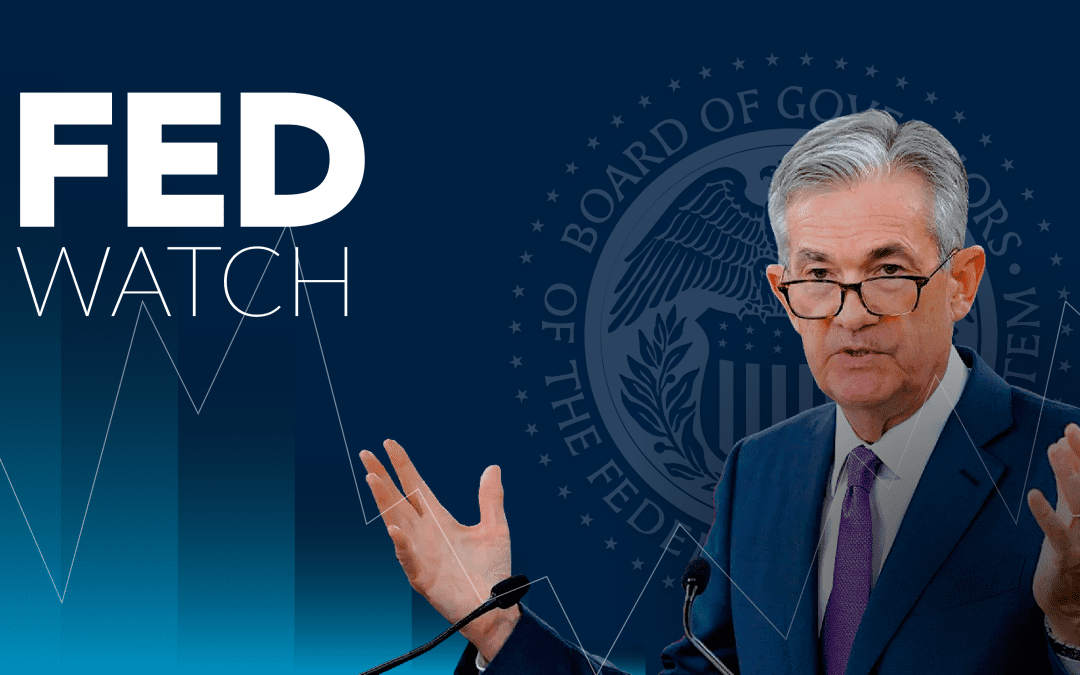The usual inflation culprits, shelter and transportation, are back, but this also means that PCE inflation will print at softer levels than CPI inflation. This report is weak enough for the Fed to continue shifting its focus to employment.


The usual inflation culprits, shelter and transportation, are back, but this also means that PCE inflation will print at softer levels than CPI inflation. This report is weak enough for the Fed to continue shifting its focus to employment.

The inflation reports are incoming over the next 24-48 hours and markets are in a wait and see mode ahead of them. We forecast another hot PPI report today!

We have a big inflation week ahead of us with US PPI & CPI inflation paired with final details from Europe. Meanwhile, we are watching the situation in Ukraine/Russia and the Nat Gas market.

Liquidity is stabilizing, and there are already signs that August will be better than July. We are aware of the risks in the labor markets, but we see strong signs of a cyclical bottom here, which may soften the impact of the uptick in unemployment.

We are getting increasingly convinced that labour markets will post a comeback in August, and even if the trend is towards softening that may push back further against current forward pricing.

Growth and inflation are taking a final dip before potentially rising throughout autumn, while liquidity is the dark horse in August with risks of weakness as the ON RRP becomes increasingly attractive. Read our allocation thoughts here.

The USDJPY trade is back in sync with fundamentals and we expect it to range between 145-150 once the dust has fully settled. Meanwhile, both equities and fixed income trade at key levels.

We see a strong risk/reward case on the low side of consensus in July. The trillion-dollar question is whether markets will celebrate it or hate it? We are honestly in doubt at this point.

The calls for emergency cuts have been silenced by a decent ISM report and a SLOOS survey pointing towards a credit re-acceleration. We stick to the view that the cycle is IMPROVING.

With the release of the SLOOS survey and the ISM Services data, we can conclude that meltdown fears are massively overstated. Here is how the Fed will handle the situation should the market continue to sell off.

The coming week is all about determining whether this is truly a recessionary meltdown or not, with the credit cycle and the ISM survey providing some much-needed clues. The credit cycle does NOT look recessionary as of now, but liquidity could turn abruptly worse.

Recessions differ in their impact depending on whether they are real or nominal, with the latter obviously being worse. Markets keep forgetting the nominal vs. real discussion this cycle, while the liquidity outlook is becoming increasingly mysterious.

Recession chitters are certainly running the headlines after yesterday’s NFP report, which was not at all what markets were hoping for a few weeks back. September pricing is now showing 70% probability of a 50 bps cut, and people are starting to pile into recession bets. Our allocation thoughts here.

The position squaring melt-down continues as TOPIX is the latest victim. It takes a massive NFP report to alter the current trends and the risk/reward in betting on such is not particularly compelling.

Markets are currently acting as if they know the true ramifications of a Fed cutting cycle, while a look through the historical lens, examining asset returns around previous Fed cuts, show that most trades are more of a 50/50 return wise. There is however one safe trade that has worked during most previous Fed cutting cycles.

The Fed looks likely to commence a cutting cycle in September, but can we use the typical cutting cycle playbook in EM- fixed income and Commodities? China is (potentially) wreaking havoc with the playbook!

We need a major hawkish shocker in either inflation or non-farm to derail the cutting cycle from the FOMC after yesterday’s presser. Betting on the cutting cycle is now “the trade you cannot miss”

USDJPY is moving substantially lower again in the aftermath of the BoJ meeting. Ueda hiked rates and prepared a QE exit, which leaves the carry trade extra vulnerable if Powell moves towards confirming market pricing.

Inflation drives (rates) markets while growth gauges seem to be somewhat neglected. This is a pattern we have seen in the past 3-4 years after the return of inflation.

The local demand in China remains on the floor, which is an issue for the broad commodity bet with China typically being the largest net consumer. China is exporting a lot, but they are not (yet) raising prices. It may eventually arrive and we remain on PPI Watch accordingly.

Full focus on USDJPY ahead of a crucial central bank week. Will the BoJ confirm the turning tide and will get help by the Fed? In Europe, we are on inflation watch in France.

Equities are showing some signs of exhaustion, and it seems like there is still impending recession fear hidden beneath the surface. Is it time to run for the hills, or time to rethink?

The market is hellbent on pricing in cuts, even when the data is hawkish. This is an interesting dynamic and the FOMC/BoJ meetings next week will be key to gauging the trend from here. Maybe markets have just ignored anything but crazy Bill Dudley this week?

The US economy is not slowing down, and several central banks in the G10 are leaning towards hikes rather than cuts as we approach autumn. Is forward pricing in rates getting ahead of itself once again?

All it took for markets to unwind their macro-divergence trades was Powell confirming the beginning of a new cycle by hinting at a September rate cut in advance, coupled with some positioning squaring ahead of the vacation season. We’re now seeing the ramifications unfold, with positioning being squared across assets and USDJPY converging back towards fair values. But are we done talking about central banks here? Not really… The market is getting ahead of itself. Here is our FOMC/BoJ preview.

The very mechanical rate path setup of Norges Bank allows us to track the rate path live, and in sharp contrast to elsewhere, it looks like we are ripe for another hawkish revision of the path in September.
The highly systematic rate path setup of Norges Bank allows us to track the rate path live. In sharp contrast to other regions, it appears that we are poised for another hawkish revision of the path in September.

It seems like the JPY move has triggered a cross-asset position squaring, meaning you need to be aware of whether a trade is popular or not. Interestingly, the curve is steepening in the meantime.

The current sell-off is driven by position squaring not least in USDJPY. The turning tide on USDJPY will impact the EM space largely and also knock-out a few EM darlings in commodity space!

The JPY is on the move ahead of the BoJ/FOMC policy meetings by month-end supported by rebalancing flows, softening real-rate spreads and a fading bid for debasement hedges. Will it impact cross-asset markets?

With the first rate cut now in effect, the Swedish economy has suddenly become an interesting “lab” for observing cyclical growth and inflation trends. All indicators point to a re-acceleration in Sweden, which the rest of the world will likely follow.